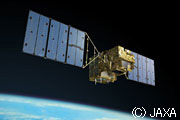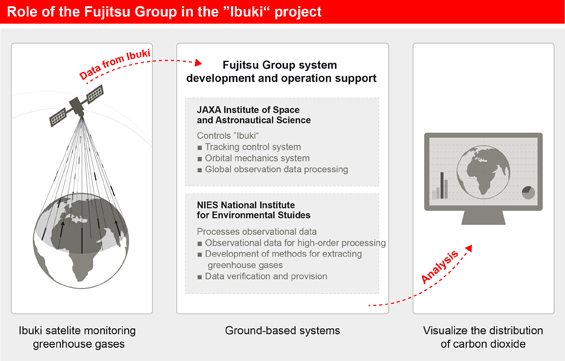Archived content
NOTE: this is an archived page and the content is likely to be out of date.
"Ibuki" greenhouse gas observing satellite

Fujitsu's development of on-board sensors, for the ground data handling systems of artificial satellites, has taken place over many years. This abundance of accumulated experience coupled with Fujitsu's leading edge ICT technology was instrumental in the progress of the "Ibuki" mission.
Fujitsu is building highly reliable high performance systems to establish the "Ibuki" operational plans, determination and forecasting of orbits, plus the processing and distributing of mission data. These and other continuing Fujitsu initiatives will contribute to preventing global warming(note 3) and achieving the goal of realizing a rich and comfortable life for all.

Related Link
Footnotes
1: "Ibuki" Greenhouse Gas Observing Satellite
"Ibuki" is a greenhouse gas observation satellite that was launched on 23rd January 2009 by the Japan Aerospace Exploration Agency (JAXA) with the goal of contributing to the "Kyoto Protocol" adopted at the Third Conference of the Parties to the United Nations Framework Convention on Climate Change that was held in Kyoto in 1997.
Greenhouse gases are said to be the number one cause of global warming, with carbon dioxide accounting for 60% and methane accounting for 20% of greenhouse gases.
2: Tanegashima Space Center
The Tanegashima Space Center was established in 1969 when the former National Space Development Agency of Japan was formed, and is the largest rocket launch site in Japan.
3: Global warming
Global warming is a phenomenon where the average temperature of the atmosphere and oceans of the Earth increases over a long period of time.


